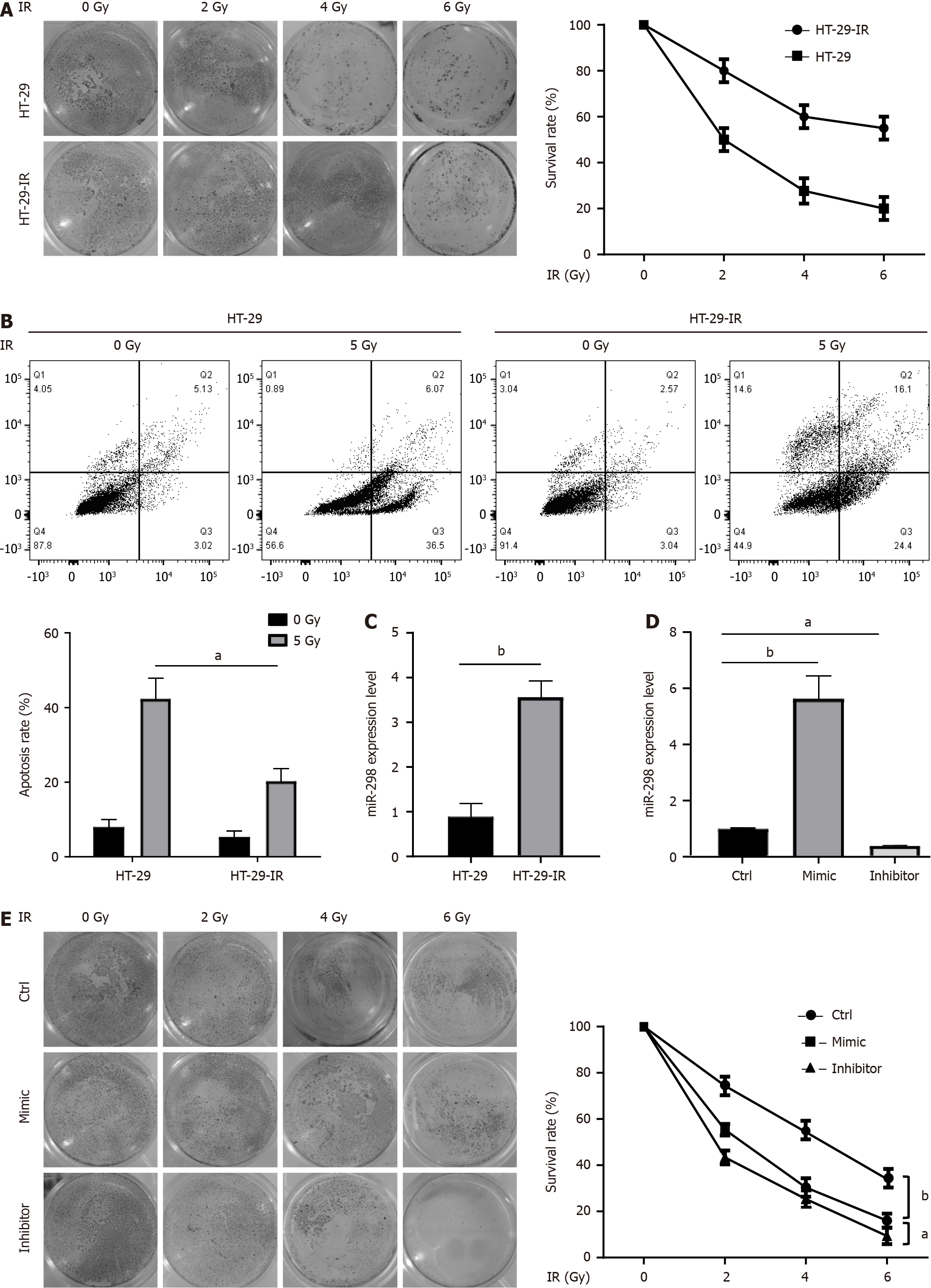Copyright
©The Author(s) 2024.
World J Gastrointest Oncol. Apr 15, 2024; 16(4): 1453-1464
Published online Apr 15, 2024. doi: 10.4251/wjgo.v16.i4.1453
Published online Apr 15, 2024. doi: 10.4251/wjgo.v16.i4.1453
Figure 1 MicroRNA-298 overexpression promoted the radiation resistance of colorectal cancer cell strains.
A: As demonstrated by clonogenic assay, radiation-resistant cell lines (HT-29-IR) exhibited a notable increase in survival rates compared to the radio-sensitive parental cell lines (HT-29) upon exposure to radiation treatment; B: Annexin V/PI staining was performed on HT-29 and HT-29-IR exposed to 5 Gy irradiation. The results indicated that HT-29-IR cells were highly resistant to radiation-induced apoptotic cell death than HT-29; C: Real-time reverse transcriptase-polymerase chain reaction (RT-qPCR) was performed to determine microRNA-298 (miR-298) expression in HT-29 and HT-29-IR; D: RT-qPCR was conducted to assess miR-298 levels in HT-29 transfection with either the miR-298 mimic or miR-298 inhibitor; E: HT-29 cells were transfected with miR-298 mimic or miR-298 inhibitor and then exposed to radiation, followed by cell survival assessment by clonogenic assay. aP < 0.05, bP < 0.01. miR-298: MicroRNA-298; HT-29-IR: Radiation-resistant cell lines; IR: Ionizing radiation.
- Citation: Shen MZ, Zhang Y, Wu F, Shen MZ, Liang JL, Zhang XL, Liu XJ, Li XS, Wang RS. MicroRNA-298 determines the radio-resistance of colorectal cancer cells by directly targeting human dual-specificity tyrosine(Y)-regulated kinase 1A. World J Gastrointest Oncol 2024; 16(4): 1453-1464
- URL: https://www.wjgnet.com/1948-5204/full/v16/i4/1453.htm
- DOI: https://dx.doi.org/10.4251/wjgo.v16.i4.1453









